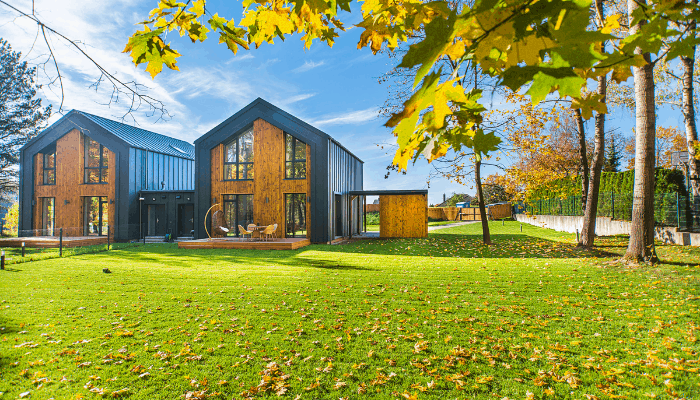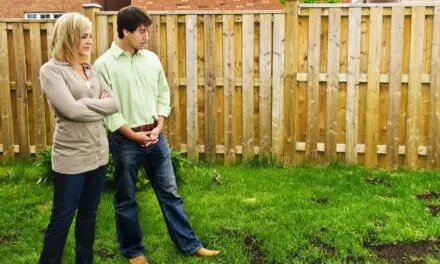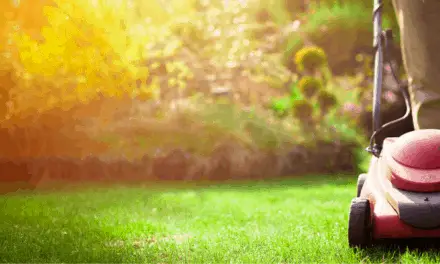Bumps, lumps, dips, and holes show up on most lawns eventually and there are lots of possible causes for a bumpy lawn, including:
- Dense clay soil freezing and then thawing unevenly.
- Animals digging.
- Children playing in the same area on soft soil.
- Lots of walking on the lawn by both people and pets.
- Misused gardening equipment can also leave holes.
And you can usually solve the problem of a bumpy lawn yourself by applying half an inch of compost, topsoil, and sand to the shallow areas.
Lawns are beautiful when they stretch out smoothly and span your entire surroundings.
They can be therapeutic, as well as a safe place for kids to run around and have fun.
But, as time goes on, even the most beautiful lawns can become uneven and bumpy.
A bumpy or uneven lawn can be a serious cause for concern.
Besides being unsightly, go on sore paws and risk to children and the elderly.
Related Article: Is It Safe To Sleep In A Room Full Of Plants At Night?
Table of Contents
What Causes A Bumpy Lawn?

Some people get frustrated with their bumpy lawns because whatever they try to do the problem persists.
And lawns often remain bumpy because people try to carry out a quick fix instead of addressing the more serious issues.
Quick fixes for bumpy lawns rarely work.
The best way to manage an uneven lawn is to first look for the cause of the bumps and then go about correcting it.
Identifying the problem first will save you from wasting time on non-existing issues.
It’s also important to think about a long-term solution so you don’t have to face the problem again in the short term.
There can be many causes for a bumpy lawn, including:
- Burrowing animals.
- Large objects buried within the soil.
- Dense and frozen clayey soil can form lumps.
- High foot traffic on soft soil can also form lumps.
It’s worth noting that bumps on your lawn will be most noticeable when your lawn is thin.
A dense lawn will hide the bumps much better than a thin one.
Some other causes of a bumpy lawn can include:
- Regular freezing and thawing conditions can cause your garden soil to heave up and leave bumps.
- Earthworm castings can sometimes cause an area of your lawn to be bumpy.
- Drought, disease, poor maintenance, and even too much shade can also contribute to a bumpy lawn.
How Do You Fix A Bumpy Lawn And Flatten Bumpy Grass?
Bumpy, rough, and uneven lawns are annoying and difficult to mow at best – but at worst, they are potentially dangerous to you, your children, and visitors to your property.
But don’t be too concerned, there’s plenty you can do to smooth out the bumps in your lawn.
Add Fertilizer
Try a couple of different quality quick-growing lawn fertilizers, like Scotts Green Max Fertilizer or Miracle-Gro Lawn Food.
They are good for thickening and improving the quality of your lawn, which ultimately reduces the visibility and feel of the bumps.
Related Article: What Is A Drunken Compost And How Do You Make It?
Use An Aerifier
An aerifier is a good for loosening the bumps by creating holes in the soil.
Follow up by breaking up lawn bumps with a power rake.
Use the rake to remove the thatch from the lawn and make sure there is no loose surface thatch after raking.
Aeration is usually only necessary for compacted soils, or in areas of dense clay.
Apply Grass Seed
Apply a grass seed that is suitable for the lawn.
Use a seed starter fertilizer, and ensure the lawn area stays moist so it grows and makes the lawn thicker.
How Do I Level My Existing Lawn Without Killing The Grass?
Apply no more than half an inch of top dressing on top of the lawn’s low areas if you want existing grass to survive.
It’s important not to add more than half an inch because it can end up smothering the grass.
Applying Top Dressing
You can make yourself some top dressing by combining soil mix (or compost and soil) together with fine sand.
Potting soil or topsoil is appropriate and shouldn’t contain any form of debris or mulch.
Kid’s play sand is okay to use and you can get it almost anywhere.
The mixture is normally 30% soil and 70% sand.
This formula can be adjusted according to soil types, as well as growing conditions.
How To Apply Top Dressing To Your Garden
- Mix a heap of leveling mixture in a tub or wheelbarrow with a shovel. Mix it properly so the sand and the soil will mix well.
- Apply approximately half an inch of the leveling mix atop the depressed area. Try not to add the mix more than half an inch.
- Use a rake to spread the topdressing across the affected areas.
- Use a broom to brush the grass back and forth.
- Apply a little water to the area. Be careful not to apply too much water can negatively affect the leveling mix.
Keep track of how the area is doing. After some time, you will notice only grass growing in your yard, and no dirt.
Should I Roll My Bumpy Lawn?
Rolling your lawn might seem like a good idea but it usually does more harm than good.
Rolling is only used when you want to seriously compact the soil.
For example, rolling is used on cricket pitches to compact the soil enough for a cricket ball to effectively bounce off of it.
And that is not what you would want for your garden.
When you compact the soil to that degree, it makes it difficult for grass and plants to grow.
What Can I Use On My Lawn Instead Of A Heavy Roller?
Rolling a bumpy lawn is usually a bad idea because of how much it compacts the soil.
But there are some other things you can use besides a roller to even out your lawn.
• Use plywood
• Power rakes are also useful when leveling out bumps
• A leveling drag is also a better option than a roller
• You can also use a drag broom
Can You Put Soil On Top Of Grass To Level?
Yes, you absolutely can put soil on top of grass to level it and it’s actually the recommended way to get the job done.
Just be careful not to put more than half an inch of soil on top of existing grass so you don’t smother it.
How Do I Level My Lawn By Hand?
Leveling your lawn by hand can be done in the following ways:
• First, you should mow your lawn as tight as possible.
• Use a de-thatcher or rake to dethatch the lawn.
• Mix up a leveling compost mix inside a wheelbarrow.
• Evenly spread out the topdressing with a rake.
• Use a push broom to ensure the soil mixture gets applied to the grass thoroughly.
• Stabilize the grass by watering it.
What is the cost of leveling a lawn?
Homeowners can expect to pay as much as $1900 for leveling a lawn.
It also depends on the size of the lawn and the severity of the unevenness.
Conclusion
There are few things as pleasing to a proud gardener than a vibrantly green and level lawn.
However, even a well looked after lawn can become a little bumpy over time.
Not only can an uneven lawn be a tripping hazard for children and the elderly, but it can also be a real eye-sore.
If you ever find yourself facing a bumpy lawn, follow along with the tips and tricks in this guide and you’ll soon get your lawn back to looking level and fantastic!




